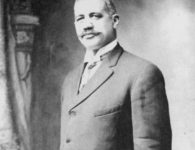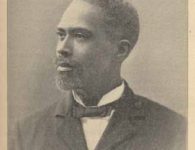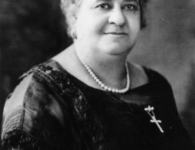Flipboard has been used to gather some of the world’s greatest minds together to order to increase awareness, share information, and open our minds to knowledge not often seen throughout mainstream media.
In this Flipboard Find byDanielle Jones, we learn more about The Unknown Legacy of the 13th Amendment
On January 31, 1865, Congress passed the 13th Amendment, declaring slavery illegal in the United States. Or so it seemed. The second line of the Amendment, and the most oft unknown, states that slavery can still be used as a form of punishment for crimes, and this practice became widely used as a part of southern backlash to Reconstruction Era policies. After the end of the Civil War, many southern states struggled with rebuilding their infrastructures and government systems. In order to avoid falling into more debt, many of these states turned towards the convict lease system, which claimed that the state prison could lease out its convicts to local companies, usually in industries such as mining, lumbering, and railroad building, to not only house prisoners inexpensively but also regain the means of labor they had with slavery before the Civil War. By adopting the convict lease system, southern states were able to earn revenue and control the suddenly free black population of the South, and with the development of black codes, these states were able to legally disenfranchise African Americans up until the 1930s when Alabama became the last state to abolish the convict lease program.
Many historians and history textbooks will say that the 13th Amendment was passed to abolish slavery. While this sentiment is true, there is more behind the reasoning than traditionally taught. Many in Congress believed that slavery was detrimental to white laborers in the South because slaves were seen as a long term investment, and white laborers were unable to make advancements because slavery was less expensive in the long run. Therefore, by abolishing slavery, they would even out the playing field, and whites would have more opportunities. For southern elites, the abolition of slavery meant the loss of a major working force, and because racism had not ended with the end of the Civil War, southern states looked to create a system that would enable them to maintain a steady work force as they began rebuilding and industrializing their states. The states turned to convict leasing, an idea that was not unique to the period after the Civil War but grew exponentially in the Reconstruction Era.
The idea of convict leasing can be traced to John T. Millner of Alabama. He originally leased slave labor to lay railroad tracks from Montgomery to Decatur and in the 1870s began using Alabama’s prison labor. The convicts were faced with squalid living conditions, poor or no medical treatment, little food, and frequent floggings. In 1873 in Alabama, 25 percent of all black leased convicts died, and most died within four months of their arrival in the mines or on the railroad. In Georgia, the convict lease program began in 1868. Georgian politicians were concerned with not only finding a work force that could be firmly controlled but also finding a way to control the increasing number of prisoners without having to build another penitentiary, which they could not afford. The first 100 convicts were leased out to the Georgia and Alabama Railroad for $2,500. 16 prisoners died within the first year over a span of eighteen months between 1872 and 1873, and Georgia earned more than $35,000 in revenue from convict leasing alone. By the late 1870s the convict leasing program existed in every former Confederate state.
Convict leasing would not have been a successful program if it were not for the compliance of the judicial systems in the South. By enacting and enforcing so-called black codes, the white elite ensured that there would be a steady flow of black labor into the prisons and out to the private companies who were participating in the program. Originally, the program did not include those convicted of misdemeanors, but by late 1870s, many states allowed for those convicted of misdemeanors to be used in the program as well. In 1903, a black miner was convicted of gaming. He could not pay off his fine, nor could he pay off the fees for the sheriff, the county clerk, and even the witnesses. The total time he needed to work to pay off this fine was 114 days in the mines. He died 33 days after his arrival, crushed by falling rock. This was just one of many cases of blacks being put into prisons on questionable charges that were supported by a flawed judicial system, a white controlled police system, and the power of the white elite in southern states.
By the late 1900s, most convict lease programs had been abolished because of the rise of Progression Era thinking. Knowledge of the inhumane treatment of prisoners had reached northerners, and many southern politicians had become more progressive when it came to the treatment of blacks in the South. Still, Alabama did not abolish its prison leasing system until 1928, and most states merely shifted the prison population to chain gangs working on state-run projects with still very low prospects for being released before being worked to death. Even today some of these chain gangs exist, a product of centuries of racial injustice and legalized means of imprisoning and practically enslaving blacks.
Sources
Blackmon, Douglas A. “From Alabama’s Past, Capitalism Teamed with Racism to Create Cruel Partnership.” WSJ. July 16, 2001. Accessed November 19, 2016.
“Convict Lease System.” Digital History. Accessed November 11, 2016.
“Convict-Lease System.” Encyclopedia of Alabama. September 12, 2007. Accessed November 19, 2016.
Douglas-Bowers, Devon. “Slavery By Another Name: The Convict Lease System.” The Hampton Institute. October 30, 2013. Accessed November 15, 2016.
Reyes, Cazzie. “State-Imposed Forced Labor: History of Prison Labor in the U.S. – End Slavery Now.” End Slavery Now. February 08, 2016. Accessed November 17, 2016.
Todd, William Andrew. “Convict Lease System.” New Georgia Encyclopedia. December 12, 2005. Accessed November 19, 2016.




















No comments